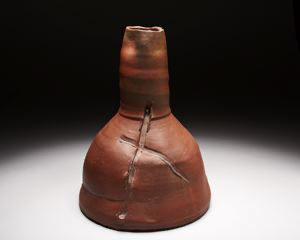| Showing 46 of 340 |
| FILTER RESULTS | × Close |

 by Artist (258)
by Artist (258)
Adja Yunkers
1
Adrian Van Suchtelen
1
Alan Bennett
3
Alan Hashimoto
1
Alexander Stirling Calder
1
Amy Freeman Lee
1
Ann Preston
1
Anna Campbell Bliss
1
Ant Farm
1
Aram Saroyan
1
Ban Kajitani
2
Beatrice Mandelman
1
Bill Ellis
1
Bong Tae Kim
1
Bonnie Schiffman
1
Brad Schwieger
1
Bror J. Nordfeldt
1
Calvin Fletcher
2
Carl Morris
1
Caroline Hinkley
1
Catharine Hiersoux
2
Charles Clough
5
Chaz Bojórquez
1
Cheryl Laemmle
1
Chester Nealie
1
Chester Toney
1
Christy Love
1
Chuck Hindes
1
Claire Falkenstein
3
Clifford Buck
1
D. Strom
1
Daryl Trivieri
1
David Dornan
1
David Jones
1
David McKay
1
David Shaner
1
David Warren
1
David Yellow Mountain Baca
1
Dean Jackson Meeker
1
Deb Brown-Davis
1
Deborah Remington
1
Denis Phillips
1
Derek Boshier
1
Dick Swift
1
Dickson Reeder
1
Don Hazlitt
1
Don Martin
2
Don Olsen
2
Don Pilcher
1
Don Sorenson
1
Dora De Larios
1
Dorothy Bearnson
2
Dorothy Bowman
1
Dorr Bothwell
1
Earl Newman
1
Eduardo Carrillo
1
Elzy J. Bird
1
Emerson Woelffer
1
Emil James Bisttram
1
Emily Gassheimer
1
Eric Orr
1
Erik Gronborg
1
Esther E. Paulsen
1
Eunice Prieto
3
Everett Clark Thorpe
1
Fannie Nampeyo
1
Ferus Gallery
1
Fitzgerald
1
Frank Boyden
1
Frank Lobdell
1
Frank Romero
1
Franklin Williams
2
Gabor F. Peterdi
1
Gaell Lindstrom
1
Gail Busch
1
Garo Z. Antreasian
3
Gastone Novelli
1
Gaylen Hansen
1
George Chann
1
Gerald Newcomb
2
Gerry Williams
1
Gladys Gray
1
Gordon Moore
1
Gronk Nicandro
1
Guillaume Cornelis van Beverloo Corneille
1
Guy de Cointet
3
Gyosui Kawanabe
1
Hal Douglas Himes
1
Hans Burkhardt
1
Harold Myers
1
Harrison Groutage
3
Harry Bowden
1
Harry Emerson Lewis
1
Hassel Smith
1
Hayward King
1
Henry Mead
1
Henry Peterson
1
Herbert Bauer
1
James Hayward
1
James McCray
1
Jason Hess
1
Jean Krillé
1
Jean Lowe
1
Jill Levine
1
Jim Isermann
2
Jim Shaw
1
Joan Miro
1
Joe Ray
1
John Alan Nyberg
2
John Buck
1
John Ferren
1
John Henri Moser
1
John Neely
1
John Nieto
1
John Takehara
3
Johnny Friedlaender
1
Joseph Mugnaini
1
Joy Navasie
1
Joyce Kozloff
2
Judy Chicago
1
Jules Engel
2
Julie E. Haramoto
1
Jun Kaneko
1
Kaoru Kawano
1
Karel Appel
1
Karen Kunc
1
Kari Smith
1
Karl Benjamin
2
Kawai Kanjiro
2
Kazuye Suyematsu
1
Kenneth Ferguson
1
Kevin Frazier
1
Knud Merrild
1
Kurt Weiser
1
L. Johnson
1
Larry Davidson
1
Larry Elsner
1
Laura Andreson
2
Lee Anne Miller
1
Lee Conklin
1
Leonard Edmondson
1
Lillian Elliott
1
Linda Lee Shimmin
1
Linda Lutz
1
Lois White
1
Loren Lukens
1
Lorser Feitelson
2
Lucian Pompili
1
Luis Eades
1
Mabel Pearl Frazer
1
Marcia Myers
1
Margaret Peterson
1
Marion Hyde
1
Mark Derby
1
Mark Kuzio
1
Mark McDowell
1
Martin Baer
1
Mary Witkop
1
Masami Teraoka
1
Maude I. Kerns
1
Max D. Weaver
3
Megan Rae Mitchell
1
Mel Clark
1
Mel Henderson
1
Meredith Moench
1
Michael David Hall
1
Michael Zanvortink
1
Moishe Smith
9
Moshe Castel
1
Neil Estrick
1
Nicholas Wood
1
Nora Eccles Harrison Treadwell
4
Norman Stiegelmeyer
1
Oli Sihvonen
1
Oskar Fischinger
1
Pamela Murakami
1
Patricia Forsberg
2
Patti Warashina
1
Paul Denis
1
Paul Kos
1
Peter Sword
1
R. Picollo
1
Randy Johnston
1
Ray Parker
1
Raymond Jonson
2
Regal China Corporation
1
Renee Petropolous
1
Reuben Kadish
1
Richard Amend
1
Richard Clayton Hicks
1
Richard H. Pettibone
1
Richard Swanson
1
Rick Dillingham
1
Robert Bennett
1
Robert Boardman Howard
1
Robert Brady
2
Robert C. Turner
2
Robert McChesney
1
Robert Ormerod Preusser
1
Robert Piepenburg
1
Robert von Sternberg
1
Robin Vaccarino
1
Romare Bearden
1
Ronald Judd
1
Roy De Forest
1
Roy Dowell
4
Russel Baldwin
1
Sadao Watanabe
1
Sam Colburn
1
Sam Erenberg
1
Scott Hess
1
Scott Williams
1
Seymour Fogel
1
Sharon Alderman
2
Sharon Brown-Mikkelson
1
Sherry Karver
1
Sibylle Szaggars Redford
2
Sidney Gordin
2
Sister Mary Corita Kent
1
Sonia Gechtoff
2
Stan Beppu
1
Stephen Mopope
1
Steven Frederick
1
Stewart Hitch
1
Students for Peace
1
Susan Harris
2
Susan Peterson
1
Terry Hutchinson
6
Theodore M. Wassmer
3
Thomas Campbell
1
Tim Ballingham
1
Tim Bavington
1
Todd Burns
1
Todd Walker
2
Tom Coleman
3
Tom Wudl
3
Tony Berlant
1
Travis Somerville
1
United Farm Workers of America
3
Unknown
8
Unknown Acoma Pueblo
1
Unknown Hopi Pueblo
1
Vaclar Vytlacil
1
Vance Kirkland
2
Viola Frey
2
Vizma Hodosy
1
Wako Ito
1
Wally Schwab
1
Warren MacKenzie
1
Warrington Colescott
1
Wayne Yantz
1
Wendell Brazeau
1
William Jackson Parkinson
1
William Nelson Copley
1
William Quincy Boyce
1
Wolfgang Paalen
1
Yolanda Gonzalez
1
Yoshimi Hayashi
1

 by Country (2)
by Country (2)

 by Object Type (49)
by Object Type (49)
{blank object type}
7
Assemblage
2
Bottle
9
Bowl
12
Box with lid
1
Bumper sticker
2
Button
1
Campus sculpture
1
Casserole dish with lid
2
Ceramic
2
Collage
3
Cup
5
Digital
2
Drawing
64
Ephemera
2
Film
1
Flyer
1
Installation
1
Instant
1
Intaglio
16
Jar
7
Jar with lid
10
Lenticular
1
Lithograph
1
Mug
1
Olla
1
Painting
82
Pitcher
1
Planographic
13
Planter
1
Plate
6
Platter
8
Portfolio of prints
1
Poster
1
Pot
8
Print
2
Relief
5
Rug
1
Screenprint
2
Sculpture
13
Sketch
1
Stencil
9
Study
2
Teapot
7
Textile
3
Tureen with lid
1
Vase
10
Vessel
6
Wedding jar
1




